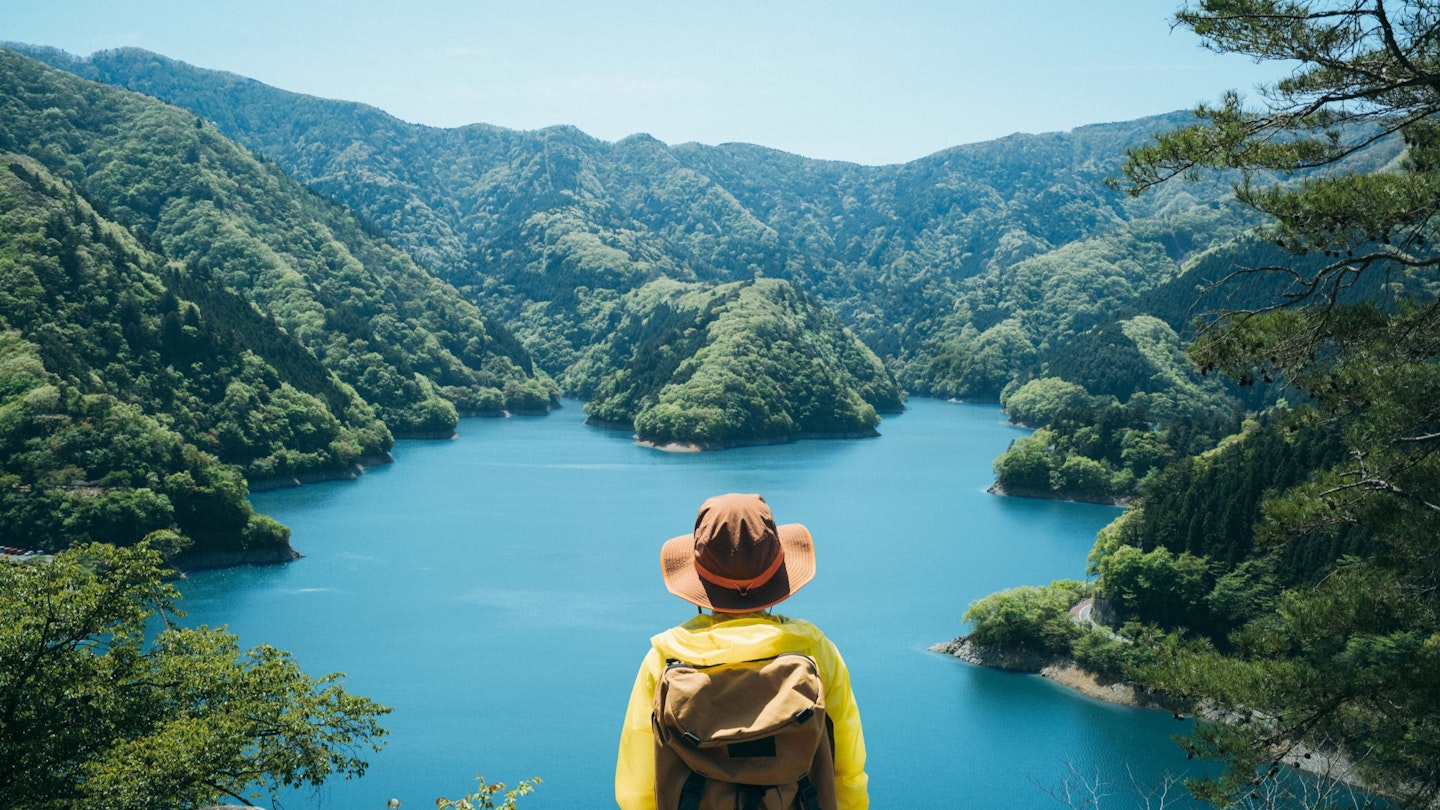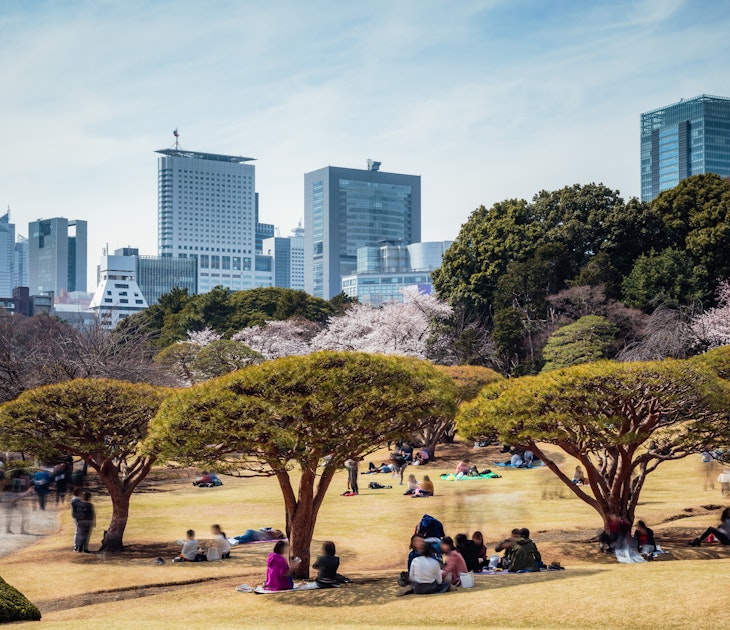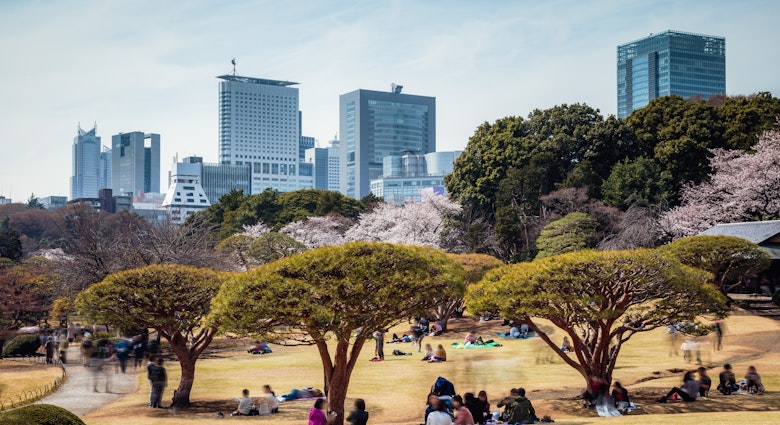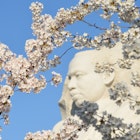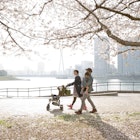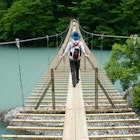When you think of Tokyo, the first images that pop into your mind are likely busy crossings and flashing neon lights. But venture out of the city limits and you’ll discover Tokyo Prefecture is as multi-faceted as the entire country.
With forested national parks, inviting rivers, sandy beaches and epic volcanoes that are nothing short of awe-inspiring, a trip here is a breathtaking journey into the natural side of Tokyo – a side most visitors don’t even know exists.
Here we’ll introduce you to several natural destinations within 2-3 hours of central Tokyo that will have you redefining your entire notion of the country’s capital.

Tama Region – Okutama and Hinohara
Head west of metropolitan Tokyo and when train-goers start to rise from their seats and let out an audible reaction, you’ll know you’ve reached the Okutama region of Chichibu Tama-Kai National Park. Here the dramatic mountain scenery has to be seen to be believed.
Okutama is just two hours from downtown Shinjuku, but a world apart. Whether you’ve come to forest bathe, soak in hot springs or take a dip in the winding Tama River, you’ll be immersed in the area’s rejuvenating qualities that seem to almost visibly linger in the air. Lush forests make it ideal for hiking, with various trails that can be accessed right from the area’s train stations.
The 929-meter Mt. Mitake is a popular day trip with something new to offer in every season. The fastest way to reach the top is a 10-minute bus from Mitake Station to the Mitake Tozan Railway, which will carry you to the upper reaches of the mountain in six minutes. From there, it is a 20-30 minute walk along the ancient cedar-lined pilgrimage route to Musashi-Mitake Shrine on the summit, a center of mountain worship for around 2,000 years.
In the surrounding village there are more than a dozen lodges – called shukubō – managed by Shinto priest families that have been caring for the shrine for centuries. If you’re looking for a unique overnight experience you can even book a night at a shukubō, which includes local meals of mountain vegetables and fish.

From the shrine there are many options for further exploration. One of the most popular is the Rock Garden route, a leisurely 2-hour loop with moss-covered stones and sacred falls, which the priests use for takigyō, a type of ascetic meditation performed while standing under a waterfall. If you want to trek further, consider a more challenging hike to the summit of adjoining Mt. Odake.
A shorter, spiritual ode to Mt. Odake can be taken off the mountain and deep within the forest of Hinohara Village. Just a 40-minute walk from Kanotoiwa-Iriguchi bus stop is a gorge with rising towers of chert formed from fossilized plankton dating back some 250 million years. Known as Kanoto Rock, this mystical place is reminiscent of a door, and is said to be the entrance to the sacred realm of Mt Odake above. In fact, there are many symbolic references to the otherworldly experience of a trip to outer Tokyo.
At the base of Mt Odake, a sanctified shimenawa Shinto rope adorning the entrance of the Otake Limestone Caves lets you know you are stepping into another world. This natural wonder offers a spelunking adventure in caverns stretching around 300 meters in length, right under the mountain. Further into Okutama, the Nippara Limestone Caves impress with illuminated stalagmites and stalactites, and comfortably cool 11-degree-Celsius temperatures all year round.
After exploring the area by foot, nothing beats unwinding by the Tama River. Camping, fishing and barbecuing are all popular riverside activities, while those seeking a faster pace can channel their inner adrenaline junkie on a rafting or canyoning tour.
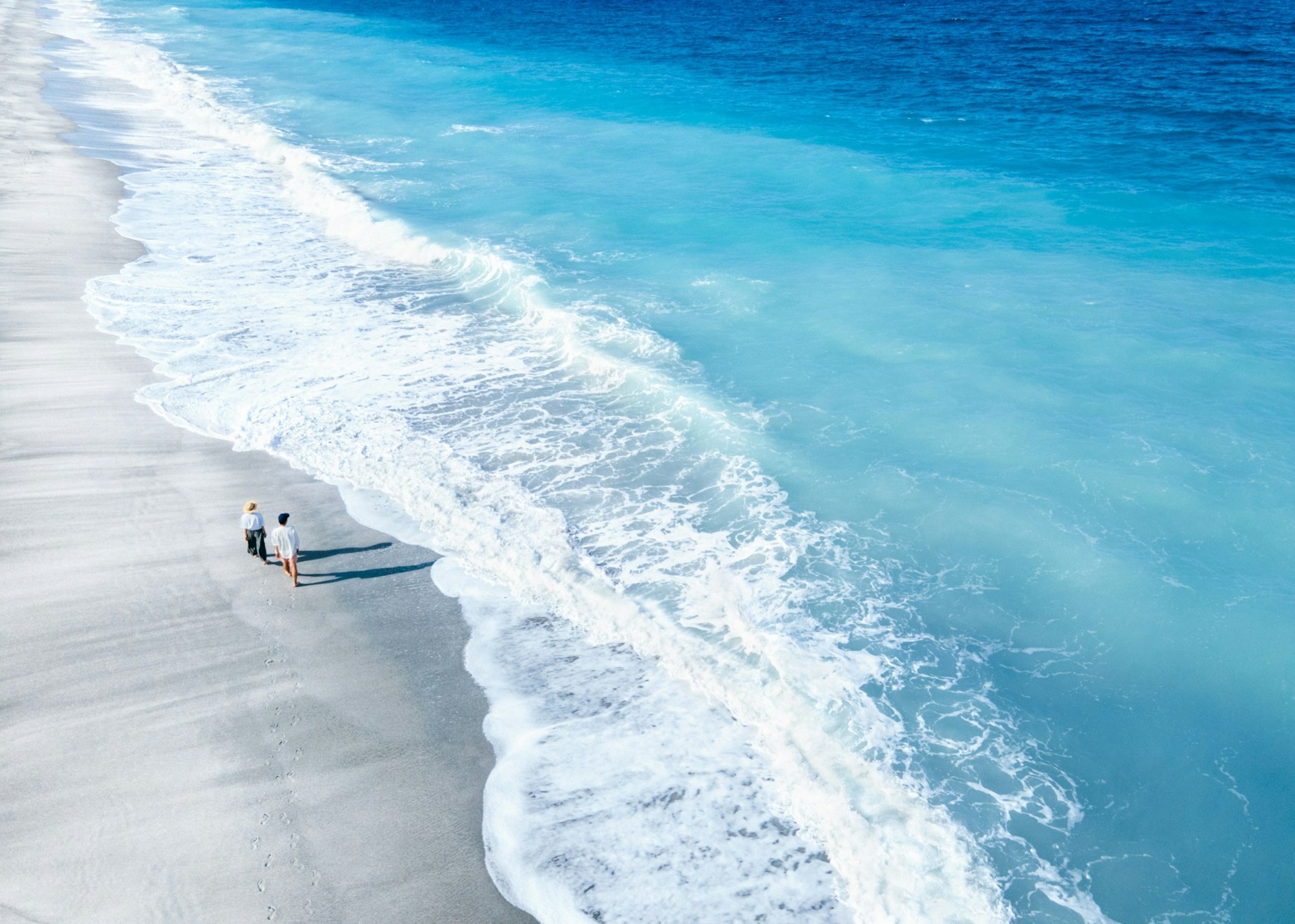
Niijima, Izu Islands
Niijima is a surfing paradise that is part of Tokyo’s Izu Island chain. Just about 2.5 hours from the mainland’s Takeshiba Pier by high-speed jet ferry or a 35-minute flight from Chōfu Airport, your preconceptions of the country’s capital will once again be thrown for a loop.
As soon as you set foot on the islands, you’ll start to feel a sense of calm, as your body adjusts to the beat of the waves. At around 24 square kilometers, or 9.2 square miles, it’s small enough that many visitors opt to do some of their sightseeing by bicycle.
Just 10 minutes’ walk from Niijima Port, you’ll reach what appears to be ancient Greek ruins perched atop a rocky outcrop facing out to sea. Climb the stairs to the top and you’ll find a mixed-gender, swimsuit-only onsen. The Yunohama Outdoor Hot Springs are free and open 24 hours a day, making them the perfect spot for taking in the island’s spectacular sunsets and stargazing after dark.
This unique onsen is not the only on the island. Less than 20 minutes by foot inland and you’ll reach Niijima Shinsui Kōen (Niijima Water Park) with unique stone structures and water features. All the stonework is made of the island’s kōgaseki, a rare kind of volcanic rhyolite that can only be found here and on Italy’s Lipari Island.
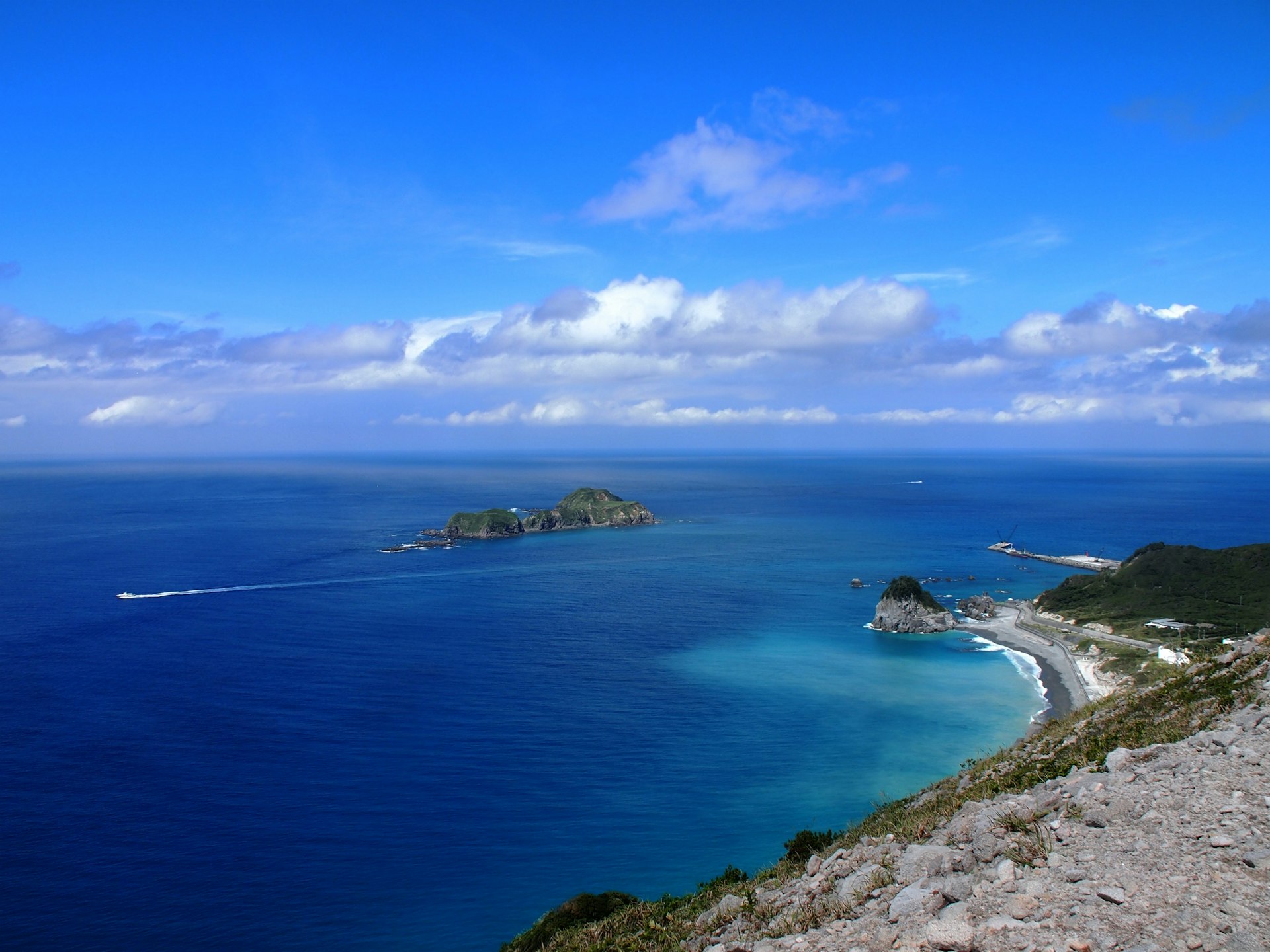
Dotted around the island, you’ll find huge moyai statues carved of the stone. The term means to “come together” in the local Niijima dialect and is a pun on the similar-looking moai statues of Easter Island. Head to Ishiyama Observatory, on an elevated quarry site, to view one of the landmark moyai as you overlook Shikinejima and Kōzushima, while the Fujimi Pass Observation Deck has beautiful night views.
Not-to-be-missed is the Habushiura Coast, in the eastern part of Niijima, where you’ll instantly notice the soft pastel hue of the water, called “milky blue,” that provides an incredible contrast to the 6.5km white sand beach. The conditions here are internationally renowned, attracting both pro and amateur surfers who come for leisure as well as for competition.
Head to the southern end of the beach and you’ll find Shiromama Cliffs, a 7km stretch of exposed volcanic strata ranging from 30 meters in height to a breathtaking 250 meters. Due to the risk of rockfall, this magnificent site should be safely viewed from a distance. It’s in this area where you’ll find the point known as “Secret” which, is a coveted surfing break known to local wave-riders, with a one-of-a-kind view.

Kozushima, Izu Islands
What Niijima is to surfers, nearby Kozushima is to scuba divers. Located just under one hour further away by high-speed jet ferry, continuing your island-hopping adventure is easy.
Kozushima is the perfect destination for relaxed water play, where splashing around in the sea, dropping a fishing line and even venturing into the underwater world of rock reefs and diving is all part of an afternoon’s frolicking.
One of the island’s most popular destinations is the Akasaki Promenade, a network of wooden walkways stretching a total distance of 500 meters around a calm and pristine cove on the island’s northwest. Here you can gaze down at the inviting waters and when they beckon, either dive or jump right in from the designated platforms. It’s an ideal spot for a casual snorkel with high visibility, coral reefs and an array of colorful, flitting fish.
With four glorious swimming beaches, visitors can easily spend their time soaking in the distinctive features of each one, namely the 1-kilometer stretch of white sand of the main beach of Maehama, the beautiful arc-shaped Sawajiri Bay, the rocky shores of Nagahama Beach, and the scenic Tako Bay at the foothills of Mt Tenjo.

For hiking enthusiasts, the striking 572-meter Mt. Tenjo affords incredible views of the entire island and even Mt Fuji, some 130km away, on a clear day. Shrouded in folklore, legend has it that long ago the gods convened at the top of Mt. Tenjo to decide how water, the source of life, was to be divided amongst the Izu Islands. Exploring the volcano’s crater loop trail is a journey through a series of surreal and diverse landscapes, from the moonscapes of Urasabaku and Hairanaigasawa to the mossy, alpine scenery of Fudo-ike and Sendai-ike.
The ultimate way to end a day on the island is at Kozushima Hotspring Recreation Center with its indoor and outdoor hot springs, jacuzzi, sauna, massage chairs, relaxation lounge and restaurant. Bring your swimsuit for the open-air baths, which includes a 275-square-meter bath set in natural rocks overlooking the Pacific Ocean with an unimpeded view up at the night sky.
It's the perfect to sit back, relax and revel in the differences between the two faces of Tokyo, metropolitan city and unparalleled natural resources – side-by-side but a world apart.

